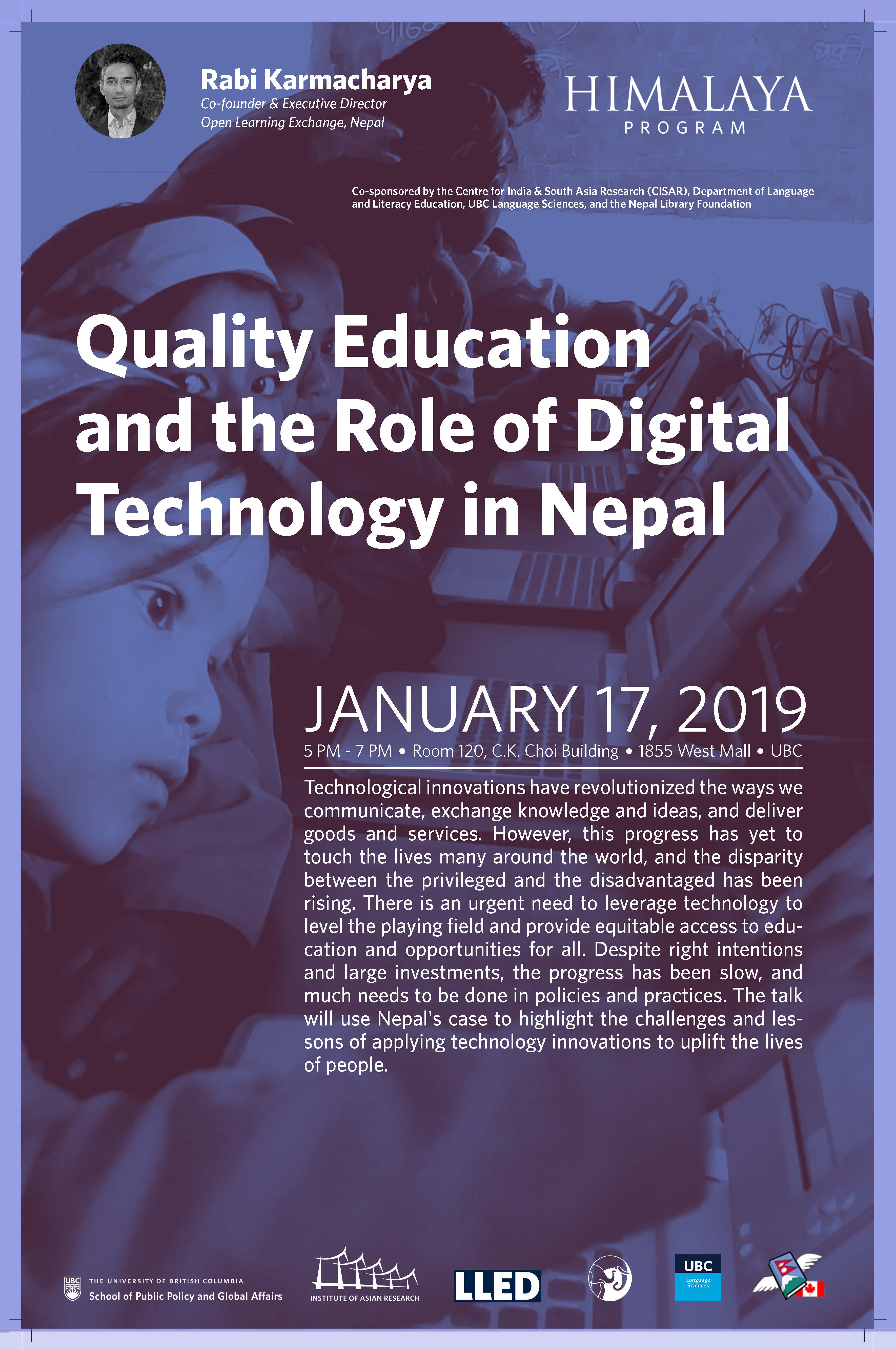The talk is available to view online here.
This talk is co-sponsored with the Centre for India & South Asia Research (CISAR), the Department of Language and Literacy Education (LLED), UBC Language Sciences, and the Nepal Library Foundation.
Abstract
Technological innovations have revolutionized the ways we communicate, exchange knowledge and ideas, and deliver goods and services. However, this progress has yet to touch the lives many around the world, and the disparity between the privileged and the disadvantaged has been rising. There is an urgent need to leverage technology to level the playing field and provide equitable access to education and opportunities for all. Despite right intentions and large investments, the progress has been slow, and much needs to be done in policies and practices. I will use Nepal’s case to highlight the challenges and lessons of using technology to uplift the lives of people.
About the Speaker
Rabi Karmacharya is a social entrepreneur who helped launch OLE Nepal with the vision to use technology to improve the quality of primary education in Nepal’s public schools, and to transform the way children learn through engagement, exploration and experimentation. Rabi has extensive experience in technological innovation and management, and a conviction that young educated Nepalis have a critical role to play in nation building. Prior to launching OLE Nepal in 2007, he headed HimalayanTechies, one of the first successful software outsourcing companies that he co-founded in Nepal in 2001. He currently serves as the Chair of the company’s Board of Directors.
Rabi holds Masters of Engineering and Bachelors of Science degrees in Electrical Engineering & Computer Science from the Massachusetts Institute of Technology (MIT). He worked at 3Com Corporation in Santa Clara, California for three years as design engineer prior to his return to Nepal. Rabi is the Asia Society’s Asia 21 Young Leader (2010) and Asia 21 Fellow (2011).
